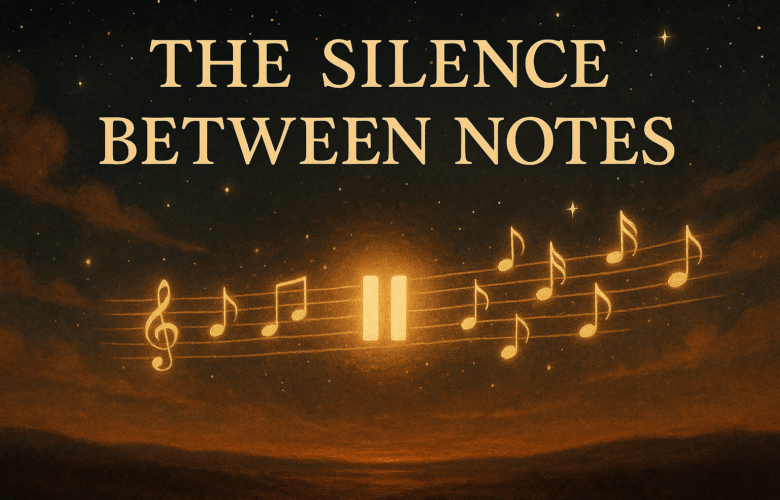Music is not only made of sound—it is also made of silence. The rests, the pauses, the lingering moments when no note is played are not absences but presences of their own. Without them, melodies would collapse into chaos, rhythms would blur, and harmonies would lose their shape. The silence between notes is what allows music to breathe, to move, to become more than mere noise.
Silence, in this way, is not emptiness but possibility. It is the invisible canvas on which sound is painted. It is the hidden architecture of rhythm and meaning. When we listen closely, we may even find that silence itself can be transcendent, a form of music that does not require instruments or voices at all.
Silence as Teacher
The rests in music remind us of the wisdom of stopping. In a world that demands constant productivity, noise, and expression, the courage to pause is revolutionary. Silence gives space for reflection. It allows us to hear not only what is outside of us but also what stirs within.
Just as a song cannot be rushed without losing its shape, life too requires pauses. A moment to breathe. A night to rest. A season to wait. In silence, meaning ripens.
The Space That Holds Us
Think of a string quartet: the musicians lean into one another, not only through notes but through shared silence. A rest is not just a break; it is a suspension, a collective inhalation that binds players and listeners together.
Or consider a choir: the final note fades, and for a few seconds, no one dares to clap. That hush—the echo of something just beyond—feels like a doorway to the sacred. It is not the sound itself but the vanishing of sound that opens us to awe.
In this way, silence is not absence but holding. It is the invisible hand that cups each note, the space that makes every vibration matter.
Everyday Silences
We encounter this music of silence in our daily lives, if we choose to notice:
- The hush before dawn, when the world seems to lean forward, waiting.
- The stillness after laughter, when joy settles into warmth.
- The pause in a conversation when both people realize something tender has been spoken.
- The breath before a kiss.
These moments are not blank spaces but thresholds. They remind us that life’s deepest truths often arrive not in clamor but in quiet.
Sacred Pause
Across traditions, silence is woven into ritual. Quakers sit in it. Monks vow it. Mystics seek it. Even in noisy worship, there is often a moment of stillness where words give way to wonder.
This is the sacred pause: the recognition that transcendence does not need to be shouted or even spoken. The holy can be found in what is not said, not sung, not struck.
The Music of Being
To live musically is not only to fill the world with sound but to honor its silences. It is to trust the spaces between our actions, to find holiness in the in-between.
We ourselves are music of this kind. Our lives are not endless streams of doing, but patterned with rests: sleep, reflection, grief, waiting. We are not diminished by these pauses. We are shaped by them.
In the end, perhaps transcendence is not only found in dazzling crescendos or soaring melodies. Perhaps it is found most profoundly in the hush between notes—the place where music gathers breath, and where we, too, are invited to listen.
Sacred Play closes with silence. But like the pause between songs, it is not an ending—only a breath before the next note.


